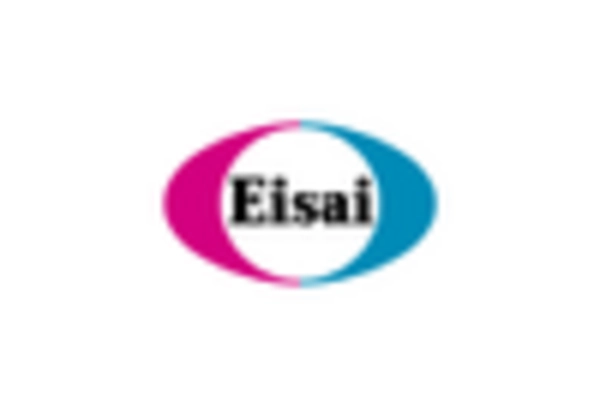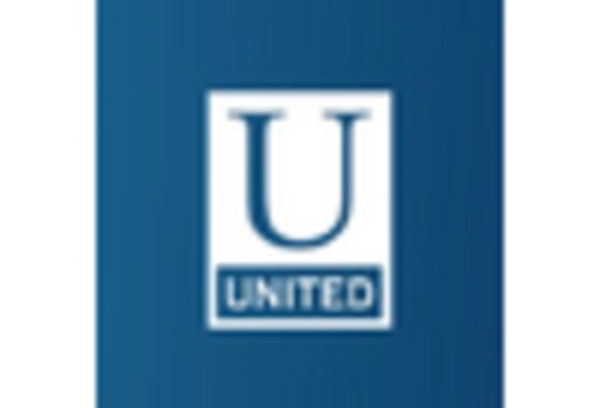The epilepsy market exhibits a dynamic competitive landscape characterized by a blend of innovation, strategic partnerships, and regional expansion. Key players such as UCB (BE), Eisai (JP), and Pfizer (US) are actively shaping the market through their distinct operational focuses. UCB (BE) emphasizes innovation in drug development, particularly in biologics, which appears to be a strategic response to the growing demand for personalized medicine. Meanwhile, Eisai (JP) has been focusing on expanding its presence in South America, leveraging partnerships with local healthcare providers to enhance patient access to its therapies. Pfizer (US), on the other hand, is concentrating on digital transformation initiatives, aiming to streamline its supply chain and improve patient engagement through technology-driven solutions. Collectively, these strategies contribute to a competitive environment that is increasingly driven by innovation and patient-centric approaches.
The business tactics employed by these companies reflect a nuanced understanding of the market's structure, which is moderately fragmented yet increasingly influenced by a few dominant players. Localizing manufacturing and optimizing supply chains are critical tactics that companies are adopting to enhance operational efficiency and reduce costs. This localized approach not only mitigates supply chain risks but also allows for quicker responses to market demands, thereby strengthening competitive positioning. The collective influence of these key players is reshaping the market dynamics, as they vie for leadership through strategic initiatives and operational excellence.
In October 2025, UCB (BE) announced a collaboration with a leading South American research institution to develop a new treatment for refractory epilepsy. This partnership is significant as it underscores UCB's commitment to advancing research in underserved areas, potentially leading to breakthroughs that could enhance patient outcomes. The collaboration is expected to leverage local expertise and resources, thereby accelerating the development process and fostering innovation in treatment options.
In September 2025, Eisai (JP) launched a new digital health platform aimed at improving the management of epilepsy in South America. This platform integrates telemedicine capabilities, allowing healthcare providers to monitor patients remotely and adjust treatment plans in real-time. The strategic importance of this initiative lies in its potential to enhance patient adherence to treatment regimens, ultimately leading to better health outcomes. By embracing digital solutions, Eisai positions itself as a forward-thinking leader in the epilepsy market, catering to the evolving needs of patients and healthcare providers alike.
In August 2025, Pfizer (US) expanded its portfolio by acquiring a biotech firm specializing in epilepsy therapies. This acquisition is indicative of Pfizer's strategy to bolster its research and development capabilities in the epilepsy space. By integrating innovative technologies and expertise from the acquired firm, Pfizer aims to accelerate the development of next-generation therapies. This move not only enhances Pfizer's competitive edge but also reflects a broader trend in the industry where companies are increasingly looking to mergers and acquisitions as a means to drive growth and innovation.
As of November 2025, the competitive trends in the epilepsy market are increasingly defined by digitalization, sustainability, and the integration of artificial intelligence (AI) in treatment protocols. Strategic alliances are becoming more prevalent, as companies recognize the value of collaboration in navigating complex market challenges. Looking ahead, competitive differentiation is likely to evolve from traditional price-based competition to a focus on innovation, technological advancements, and supply chain reliability. This shift suggests that companies that prioritize research and development, alongside strategic partnerships, will be better positioned to thrive in the evolving landscape of the epilepsy market.

















Leave a Comment